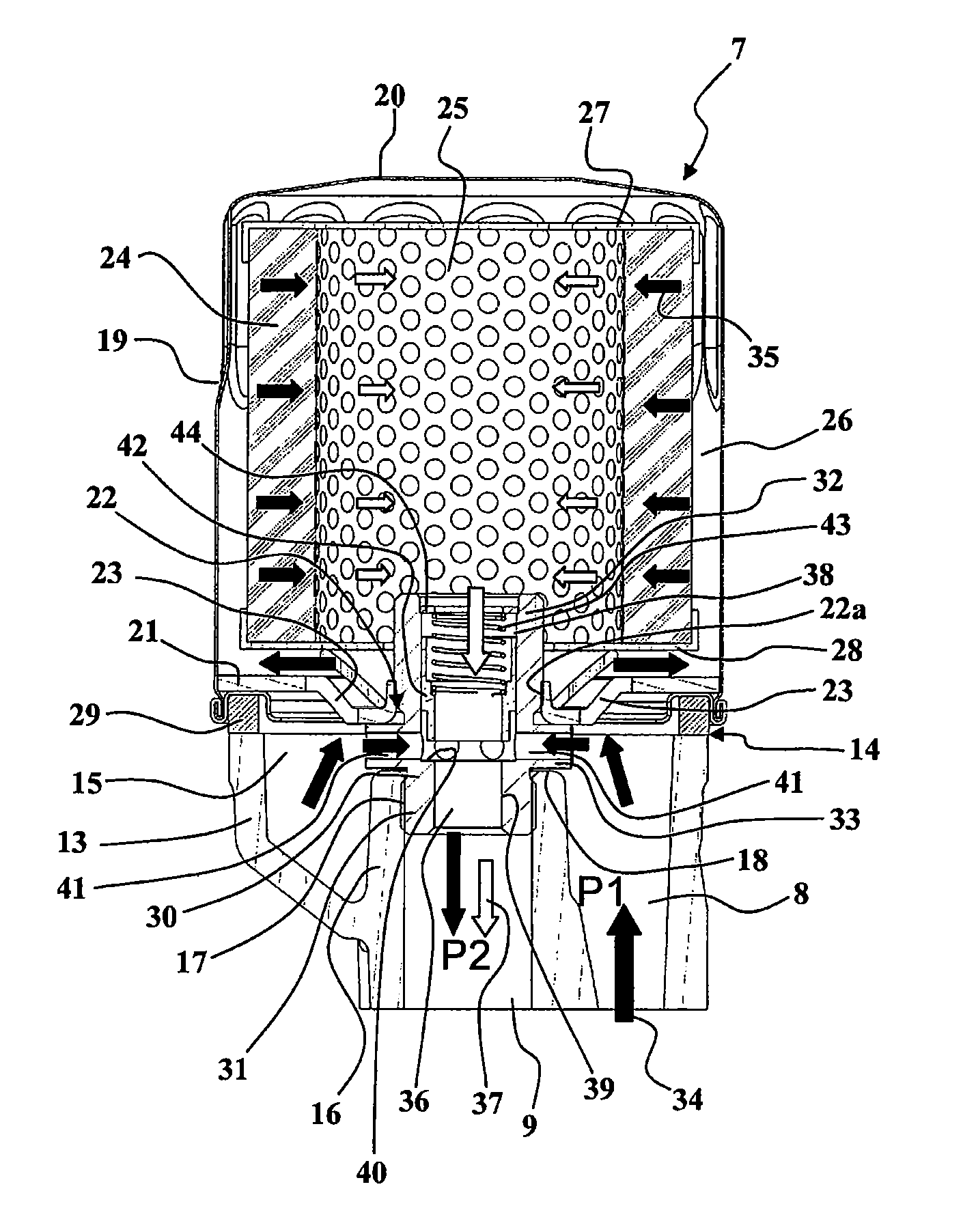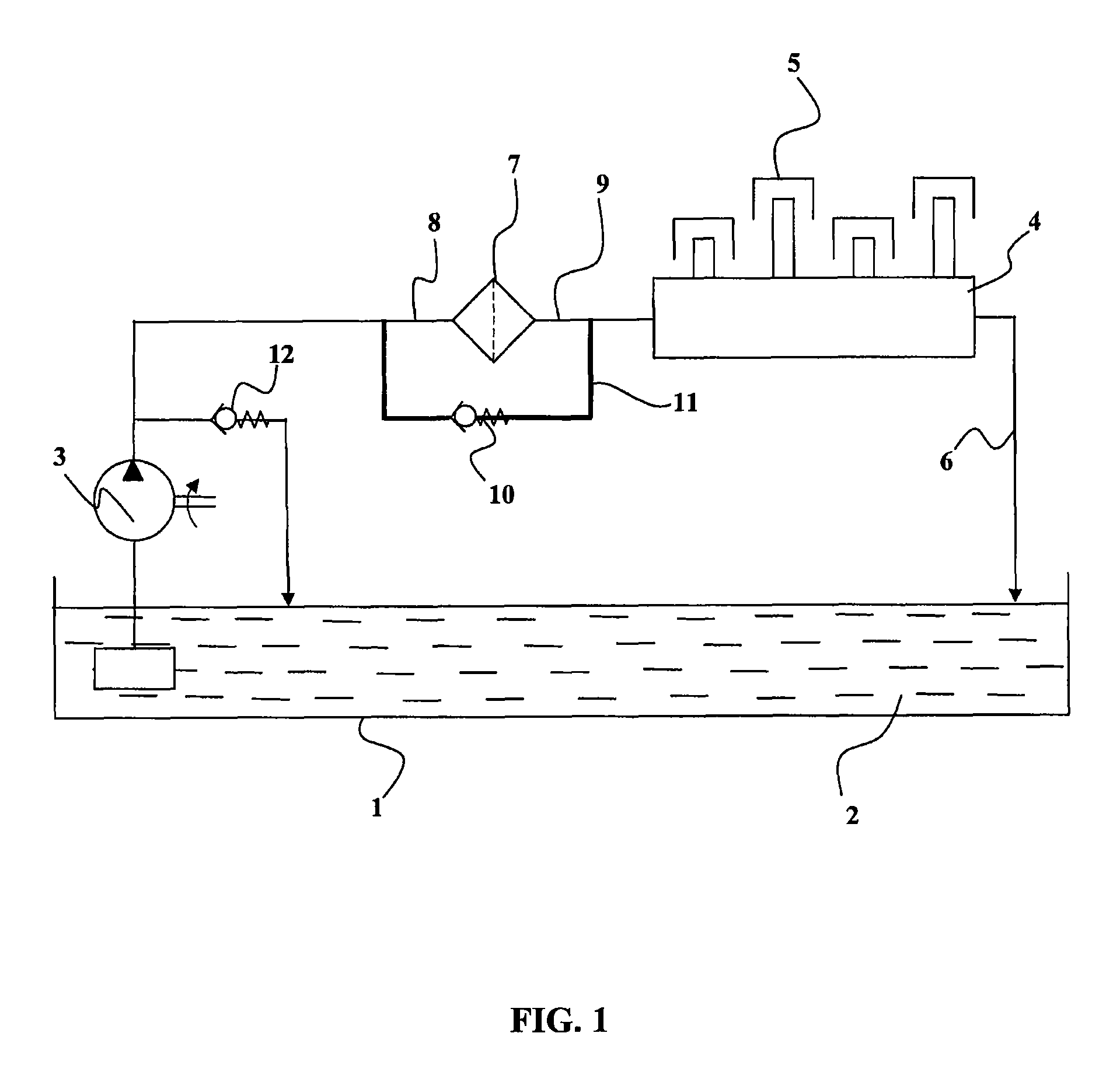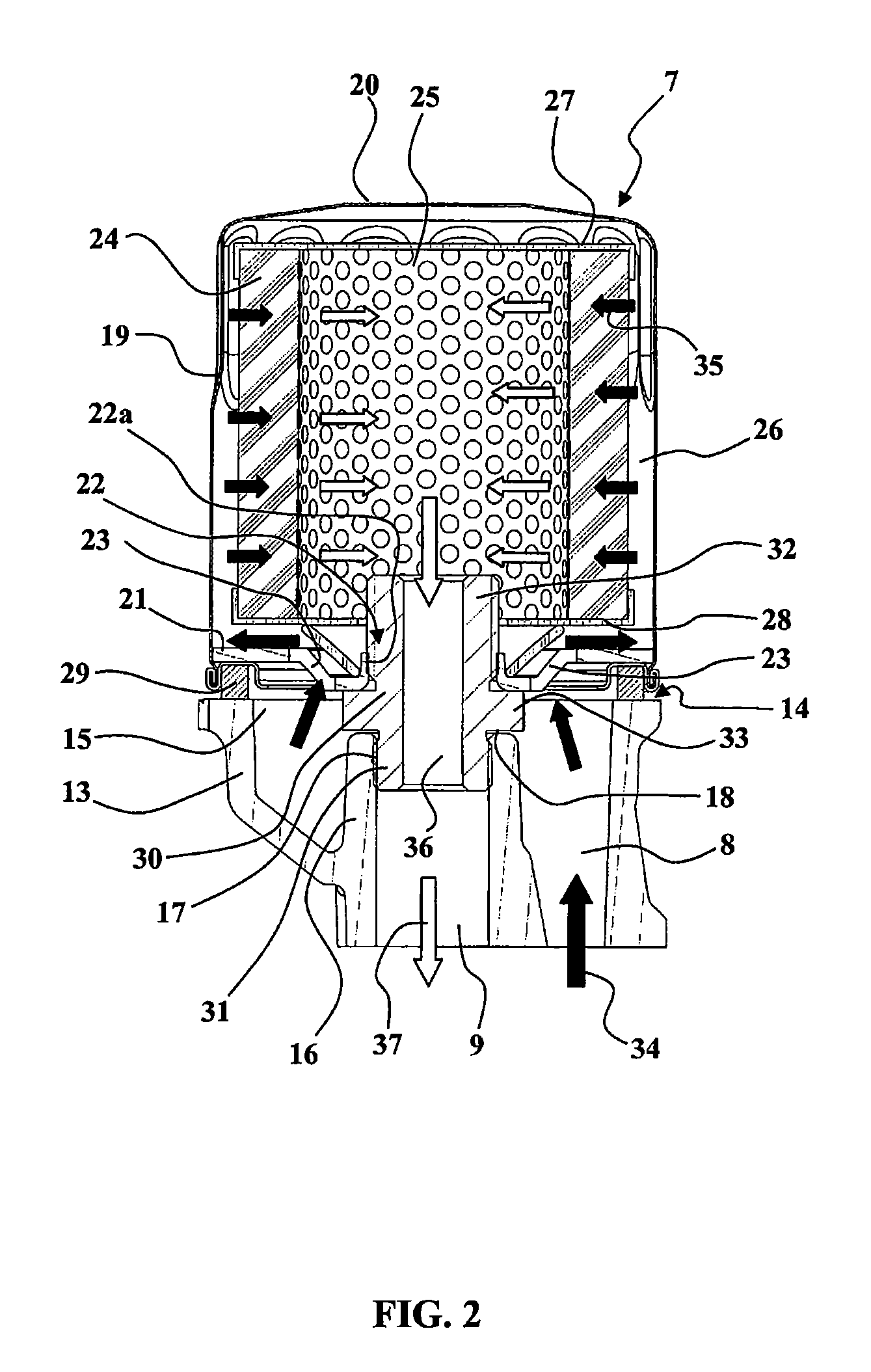Oil bypass device, and engine fitted with such a device
a bypass device and oil technology, applied in the direction of cartridge filter, cleaning of hollow articles, corrosion prevention, etc., can solve the problems of oil pressure, oil pressure, and progressive increase of the head loss of the filter, so as to avoid the risks of failure, and improve the reliability of operation
- Summary
- Abstract
- Description
- Claims
- Application Information
AI Technical Summary
Benefits of technology
Problems solved by technology
Method used
Image
Examples
Embodiment Construction
[0041]Consider first FIG. 1, which shows the general structure of an oil distribution circuit for cooling and lubricating moving parts of an engine.
[0042]The engine comprises, in the lower portion, a sump 1 that receives and contains an oil reserve 2. A pump 3 takes oil from the sump 1 and sends it under pressure in a distribution passage to an oil distribution network 4 that directs the oil to the moving parts such as the pistons 5 of the engine and the vital parts such as the crankshaft bearings of the engine. The oil then returns to the sump via a return passage 6.
[0043]In the distribution passage, a filter 7 is inserted between the pump 3 and the oil distribution network 4. The filter 7 is interchangeable, and thus is connected in a removable and sealed manner between an inlet passage 8 and an outlet passage 9 of the distribution pipe.
[0044]A bypass valve 10 is connected between the inlet passage 8 and the outlet passage 9 by a bypass passage 11. A relief valve 12 provides selec...
PUM
| Property | Measurement | Unit |
|---|---|---|
| differential pressure | aaaaa | aaaaa |
| diameter | aaaaa | aaaaa |
| pressure | aaaaa | aaaaa |
Abstract
Description
Claims
Application Information
 Login to View More
Login to View More - R&D
- Intellectual Property
- Life Sciences
- Materials
- Tech Scout
- Unparalleled Data Quality
- Higher Quality Content
- 60% Fewer Hallucinations
Browse by: Latest US Patents, China's latest patents, Technical Efficacy Thesaurus, Application Domain, Technology Topic, Popular Technical Reports.
© 2025 PatSnap. All rights reserved.Legal|Privacy policy|Modern Slavery Act Transparency Statement|Sitemap|About US| Contact US: help@patsnap.com



